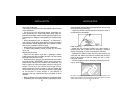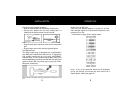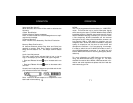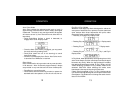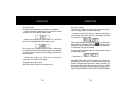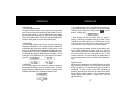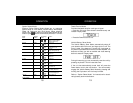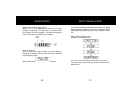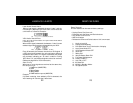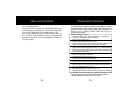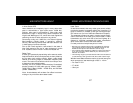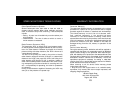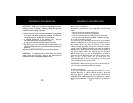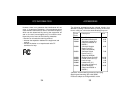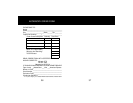
SPEED MONITORING TECHNOLOGIES
27
ARE DETECTORS LEGAL?
26
Laser Facts
I t ’s well documented that many radar guns cannot re l i a b l y
p r ovide the speed of a targeted vehicle that is traveling in a
g r oup of vehicles. In contrast, a laser gun can target a spe-
cific vehicle out of a line of traffic and determine its speed.
The advantage of laser over radar in terms of target identifi-
cation is the result of the laser gun’s narrow beam. A radar
transmission can cover more than a four-lane highway at a
distance of 1,000 feet, compared with a laser transmission
which covers about 3 feet at the same distance.
For best protection, keep these points in mind:
• Because your vehicle’s license plate or headlights are the laser
g u n ’s primary targets, mounting your Whistler detector on the
d a s h b o a rd can improve laser detection at short range.
• Do not follow closely behind any vehicle you cannot see thro u g h .
If you can’t see past a vehicle ahead of you, chances are your
detector won’t either.
• The receiving range of your laser detector will not be the same as
a radar detector. Laser guns are most often used at short range.
Whistler Laser/Radar detectors receive all current laser guns
which operate at a laser wavelength of 905 +/- 10mm.
• P ro Laser™ I II III
• LT1 20-20
• Ultra Ly t e
In Most States YES!
Laser detectors are completely legal in every state when
used in automobiles or light trucks (under 10,000 lbs.).
Similarly, when used in automobiles or light trucks, radar
detectors are legal in almost every state. Exceptions are
Virginia and Washington, D.C., which have local regulations
restricting the use of radar receivers in any vehicle.
Concerning trucks over 10,000 lbs., the Federal Highway
Administration (FHwA) issued a regulation, eff e c t i v e
January, 1994 which prohibits radar and laser detector use
in these types of vehicles nationally.
Prior to the FHwA regulation, laws existed in the state of
New York restricting the use of radar detectors in trucks
over 18,000 lbs. and in Illinois in trucks over 26,000 lbs.
Radar Facts
A radar gun operates by transmitting radio waves at cert a i n
f requencies which reflect off objects and are then picked up
by the radar gun’s receiving section. When a radar beam
reflects off a moving target, a measurable frequency shift
occurs. The radar unit converts this shift into miles per hour
to determine your vehicle’s speed.
C u r re n t l y, the FCC (Federal Communications Commission)
p e rmits operation of traffic radar guns at X Band (10.500 -
10.550 GHz), K Band (24.050 - 24.250 GHz), and Ka Band
(33.400 - 36.000 GHz).
N o t e : A radar detector will not alarm if an officer is not trans-
mitting on any one of the above radar bands!



